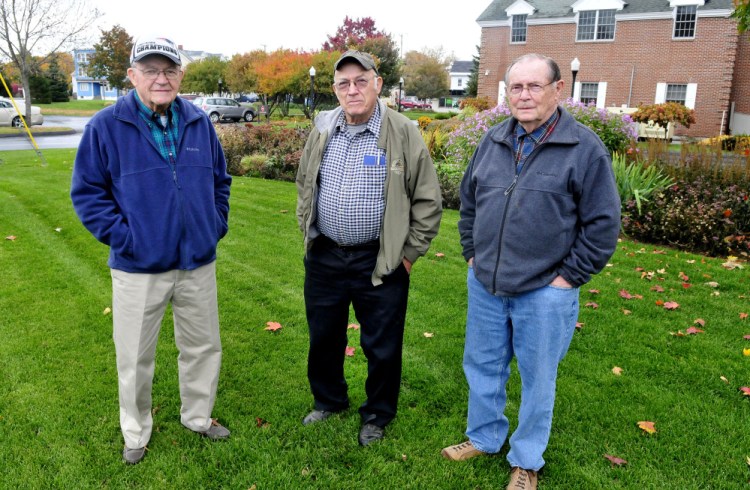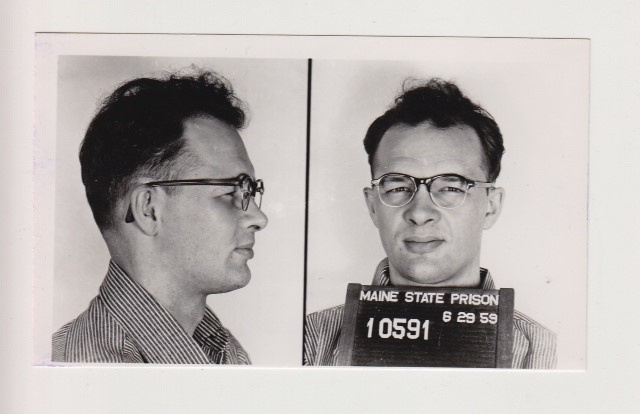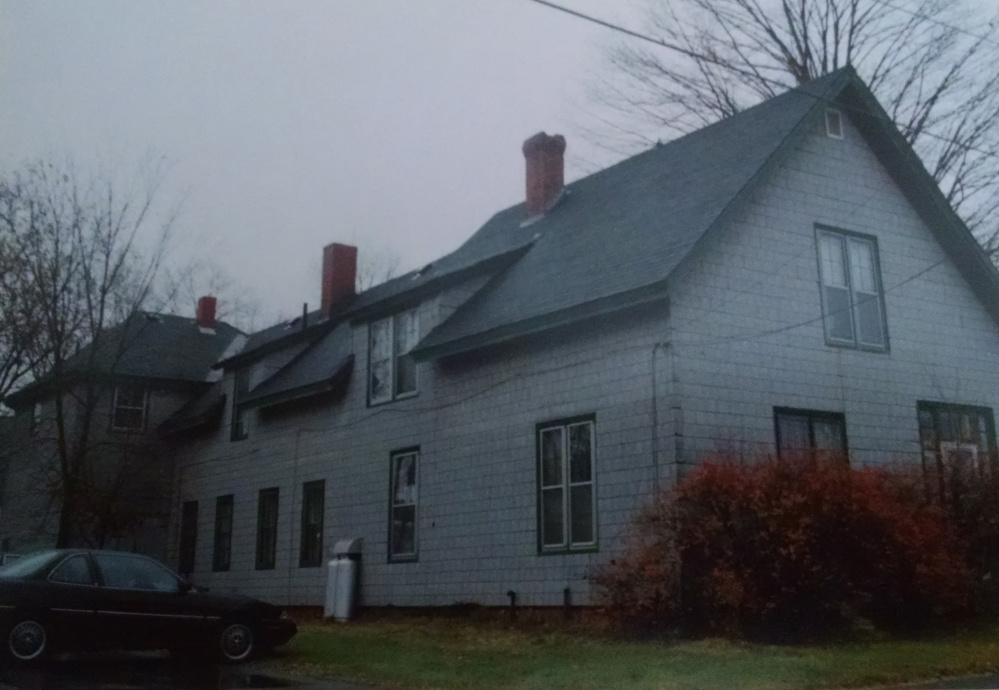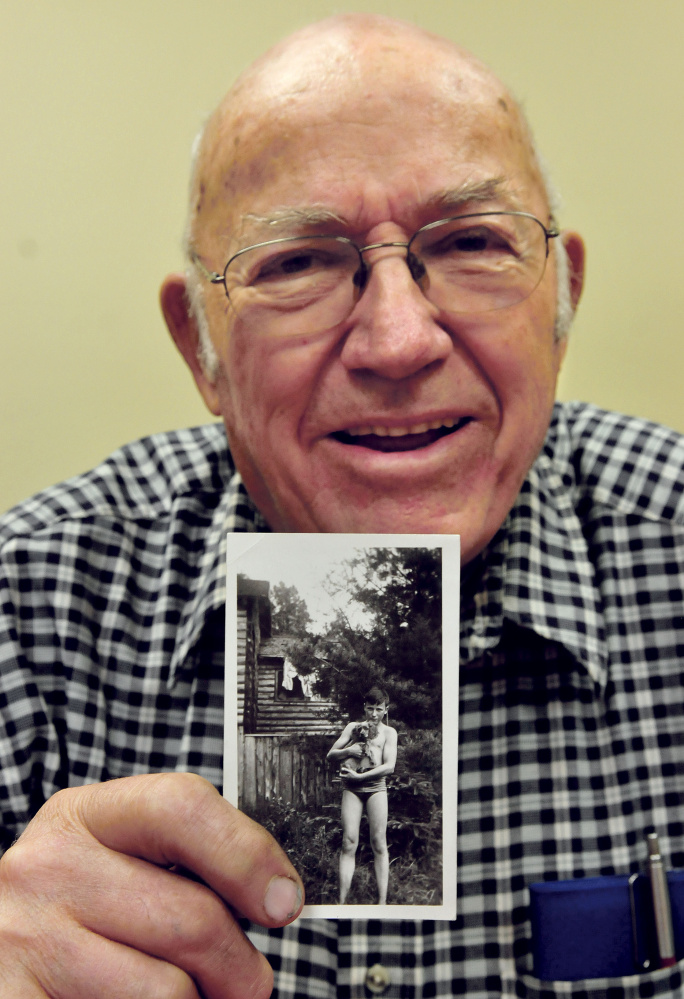Lowell Hawes was not surprised to hear his former Winslow High School classmate Charles Terry is suspected of murdering multiple women, including some of those allegedly killed by the Boston Strangler.
Neither is Lee Hapworth, who also went to Winslow High School with Terry and lived near him in Winslow.
John McQuillan, of Winslow, and his brother Robert, of Sidney, are also not surprised. Their family had a camp near the Terry family’s on Messalonskee Lake when they were children.
A crew from Boston-based Northern Light Productions is researching Terry’s possible connection to the Boston Strangler killings, which took place from 1962 to 1964, and other murders, including two in Maine. The production crew, accompanied by a Florida assistant state attorney whose father helped arrest Terry in 1963 in New York, is developing an audio podcast for the website of TV channel Investigation Discovery.
After a Morning Sentinel story about the crew’s visit to Waterville was published Sunday, the former classmates and acquaintances of Terry contacted the newspaper and wanted to talk about their recollections of him.
Hawes, 84, recalls Terry was an odd boy who incited teachers to anger until he got suspended and then kicked out of school altogether.
Terry kept to himself most of the time, according to Hawes, of Winslow.
“He was a very anti-social type of an individual,” Hawes said. “He was sitting in biology class all stretched out and he’s tearing up a piece of paper and dropping the pieces on the floor. Perley Hanscom, the biology teacher, said, ‘Charles, will you pick up the paper?’ Charlie ignored him, just like he wasn’t there.
“After the third time, the teacher picked him up and threw him against the wall. Charlie turned white and ran out the door.”
Terry, who had lived in Waterville until age 10, and then Winslow, went on to serve time in Maine State Prison for rape and assault. He was convicted in 1963 of murdering Zenovia Clegg, 62, in a New York City hotel room, beating her, sexually assaulting her with a liquor bottle and leaving her naked and dead with the scarf he used to strangle her around her neck.
The McQuillan family had a camp on Messalonskee Lake in Sidney when they were children, two camps away — about 150 yards — from Charles Terry’s family camp.
When Terry was 4, he nearly drowned in Messalonskee Lake, according to police and prison records. His head struck a rock and he became unconscious and was revived, but his parents later said they believed the near-drowning contributed to his psychological problems, according to police records.
John McQuillan, 85, recalls he was about 10 when he first met Terry at the lake.
Terry threw a rock at McQuillan’s head when was 13, and McQuillan still has the mark on his head where it hit.
He recalled Terry also stole things, and that led to the attack.
“My father had a big workshop, so a number of times Charles would go up there and take stuff out of the workshop,” McQuillan said. “When we caught him in there, he came out. He was a lot bigger than we were. He picked up a rock and threw it at us and hit the back of my head.
“We said we got to do something to get even with that guy, so we strung wire between two trees. We slept in a tent out there when we were kids, and we caught him again in the workshop running around, looking for something to steal. He saw us, so he started chasing us. I told my brother, ‘This is perfect. He’s chasing us.’ We ran between the two trees and bent down, and that wire got him right in the neck and he flipped on the ground.
“He never came back again.”
‘HE WAS NO DUMBBELL’
Hapworth, 86, of Winslow, knew Terry when Terry’s family lived on Garland Road in that town.
Hapworth was a sophomore at Winslow High when Terry got thrown out of biology class — a recollection similar to Hawes’.
Hanscom, a barrel-chested, well-respected teacher and former boxer, told Terry to go to the office, Hapworth said.
“He didn’t go. Charles Terry was tall and he was big, and so Perley Hanscom came over and he opened the classroom doors. I knew something was going to happen quick. Perley started writing something on the board. He turned around and said, ‘Charles, you haven’t gone yet.'”
The next thing they knew, Hanscom had tossed Terry out.
“He threw him, chair and all, right out the door,” Hapworth said. “That’s the way it was back then. Teachers were in control. He got kicked out. He didn’t come back after that.”
Terry had been suspended from school even before then, according to Hapworth. “He had to get his parents to get him back into school. He was smart. He was no dumbbell.”
Like the McQuillans’, he also recalled Terry was a thief.
“You couldn’t go into the boys’ locker room at school and leave a locker unlocked, because he’d go through it,” he said. “He’d steal money. He’d steal anything.”
Hapworth’s grandmother took in children who were wards of the state. She took in a family of five because the state wanted to keep the children together and one of them, a boy named Billy, worked on a farm, Hapworth said.
“He was about 15,” he said. “Back then, kids could work, and he saved up enough money to buy himself a bicycle; and this Charles Terry stole that bicycle, but Billy and I got even. I took my bicycle and I pedaled him all the way to Benton, and we stole Charles Terry’s nice canvas boat. His father came back to me, and we said, ‘You don’t get the boat until we get that bicycle back.’ A short time after that, the bicycle showed up at the farm.”
Terry, who was 6 feet, 5 inches tall, served in the U.S. Marines for two years but was dishonorably discharge after he was arrested and convicted of stealing an automobile while absent without leave. He later married Theresa Lessard LaRochelle, of North Vassalboro. They divorced in 1961.
John McQuillan’s wife, Shirley, was also classmate of Terry’s at Winslow High. The McQuillans lived in Union City, New Jersey, after they were married. Shirley recalled hearing on the radio in 1963 that Charles Terry, from Waterville, Maine, had just killed somebody in New York City.
“I was stunned,” she said. “I could not get over it. I said, ‘Oh, my God, that’s the Charles Terry I went to school with.”
‘ALWAYS A LITTLE BIT DIFFERENT’
In 1951, Shirley Coolen, 24, was strangled in Brunswick, a murder that was never solved. In 1958, Patricia Wing, 29, of Oakland, was killed in Fairfield. Wing’s lover, Everett Savage Jr., was convicted of assault in her death and served time in prison. Researchers are exploring whether Terry might have killed Wing and Coolen.
Terry had been convicted of raping a woman in 1951 in Kennebec County and sentenced to eight years in the Maine State Prison, where he destroyed state property, drew obscene pictures, caused disturbances and was unpopular with inmates, according to prison records. He was discharged in 1958 but was sent back to prison in 1959 for assaulting and battering a woman.
From June 1962 to January 1964, 13 women were raped and murdered in Boston, crimes attributed to the Boston Strangler. Albert DeSalvo confessed to the killings but was never convicted of them; he was sentenced to life in prison in 1967 for a series of rapes and robberies. DeSalvo died in 1973, stabbed to death in prison in Walpole, Massachusetts.
In 2013, DNA evidence linked DeSalvo to the final Boston Strangler murder, that of Mary Sullivan, who was killed in 1964.
Terry, who had lung cancer, died at age 50 in 1981 in Attica Correctional Facility in New York.
Brian Cavanagh, an assistant state attorney from Florida, has been investigating the case with the Northern Lights crew, following in the footsteps of his father, Thomas J. Cavanagh Jr., a former New York City detective who drew the confession to the Clegg murder out of Terry in 1963. Thomas Cavanagh spent the rest of his life convinced that Terry had committed more murders, and he worked to prove that.
Cavanagh said he owes it to his father to finish his work and find out whether Terry committed other murders.
Robert McQuillan, 87, said they knew Terry only from the summer romps on Messalonskee Lake. Even so, Terry was memorable, he said.
“He was always a little bit different — we’ll put it that way,” McQuillan said. “It always seemed to me something was wrong with him. His sister, Frances, was the prettiest girl I’d ever seen until I met my wife. I remember them well.”
The Terry family lived at 95 Pleasant St. in Waterville when the children were young, where Kennebec Savings Bank is now. Frances, Terry’s sister, continued to live at 95A Pleasant St. after marrying Louis Beers.
In 1963, when McQuillan heard that Terry had been convicted of killing a woman in New York, he was not surprised.
Hapworth also said he would not be surprised to hear Terry was involved in other murders.
“We said, ‘We always knew he was going to do something.’ I see they’re trying to tie him to the Boston Strangler killings. It wouldn’t surprise us. It does sound just like him,” he said.
“They do it once, they’ll do it again,” he said.
Hapworth knew Terry when Terry’s family lived on Garland Road in Winslow and the Hapworths lived on Heywood Road. The families lived on opposite sides of the Sebasticook River and, besides school, that’s where Hapworth would run into Terry.
“This is a nice family,” Hapworth said of the Terrys. “He came out of a real nice family. His parents and sister were nice people.”
Amy Calder — 861-9247
Twitter: @AmyCalder17
Copy the Story LinkSend questions/comments to the editors.







Success. Please wait for the page to reload. If the page does not reload within 5 seconds, please refresh the page.
Enter your email and password to access comments.
Hi, to comment on stories you must . This profile is in addition to your subscription and website login.
Already have a commenting profile? .
Invalid username/password.
Please check your email to confirm and complete your registration.
Only subscribers are eligible to post comments. Please subscribe or login first for digital access. Here’s why.
Use the form below to reset your password. When you've submitted your account email, we will send an email with a reset code.